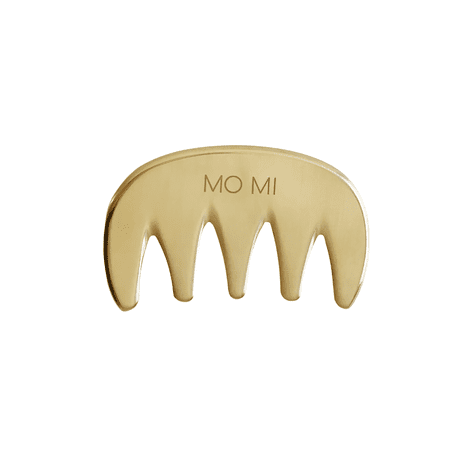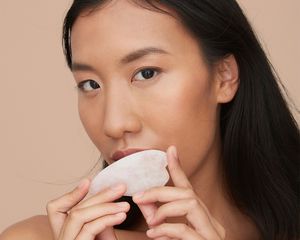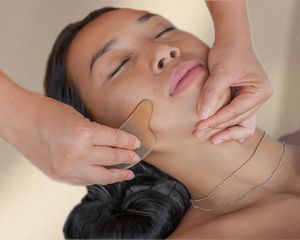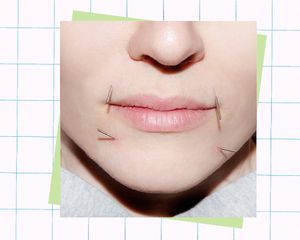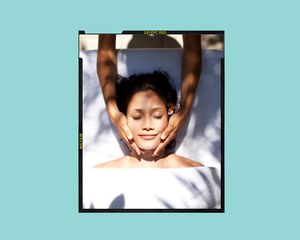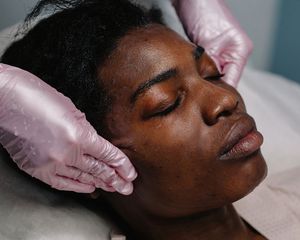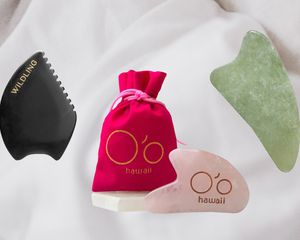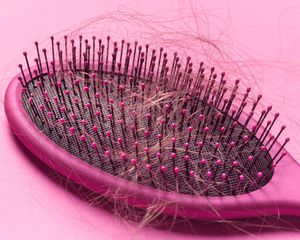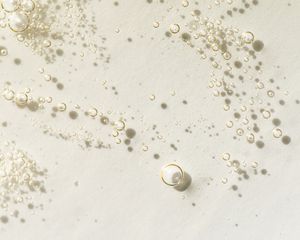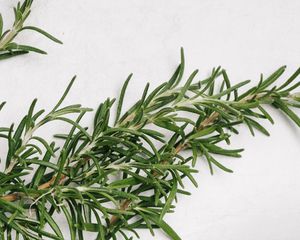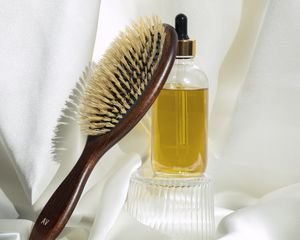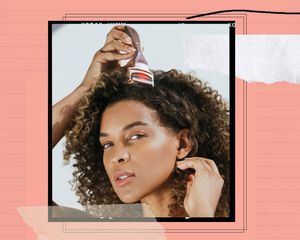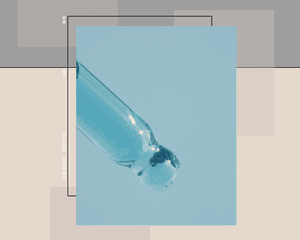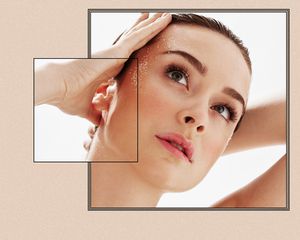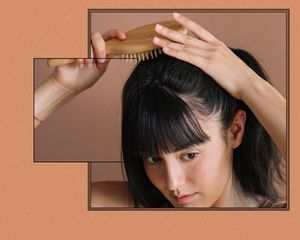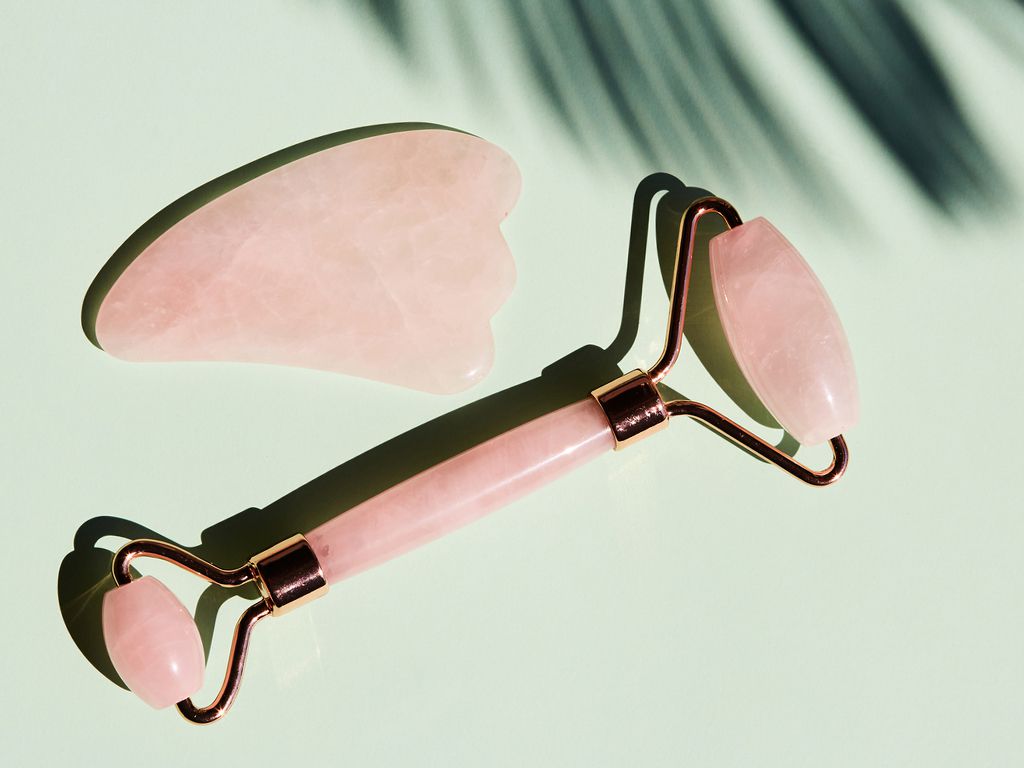
ohlamour studio / Stocksy
Long used in Asia to treat fever and pain in the body, gua sha has gained popularity in beauty and skincare routines for its ability to de-puff and define the face. Gua sha treatments stimulate the tissues of the body with scraping motions using the edge of a tool. Often made of jade or rose quartz, modern gua sha tools seek to provide a gentler scraping edge than coins or spoons, which were sometimes utilized in gua sha treatments.
But could there be a benefit to using gua sha techniques on the scalp? We turned to two experts to better understand what benefits gua sha could have for hair and scalp health: board-certified dermatologist Rachel Nazarian and board-certified practitioner of acupuncture and traditional Chinese medicine Kai Yim. Ahead, find their expert advice on using gua sha for scalp and hair.
Meet the Expert
- Rachel Nazarian of Schweiger Dermatology is a board-certified dermatologist who specializes in general dermatology, cosmetic dermatology, skin cancer, and dermatological surgery.
- Kai Yim, LAc, MSTOM, is a New York state board-certified practitioner of acupuncture and traditional Chinese medicine (TCM).
What Is Gua Sha?
Often mistaken for the name of the tool used to perform the scraping, gua sha actually refers to the manner of treatment. "Gua" denotes the scratching or scraping of the skin, while "sha" describes the petechiae and redness that results from the treatment. "Gua sha is a manual modality of Chinese medicine where we take the rounded edge of a tool to stimulate tissues of the body," Yim explains. According to Yim, gua sha can be used as both a diagnostic tool and to treat internal concerns. While most people are familiar with facial gua sha, it is traditionally done on the body, specifically the back and neck, says Yim.
But no matter what surface of the body gua sha is performed on, the reaction is the same, explains Yim. The gua sha scrapes intentionally create petechiae, which are traditionally referred to as "sha" and can be loosely translated as stagnant blood. On a biophysical level, Yim explains that the blood vessels in the area dilate, which can lead to oxidation of the area and normalizes pH and cellular production. Additionally, Yim explains that gua sha can help to clear your channels and anxiety by tapping into the parasympathetic nervous system.
The Benefits of Gua Sha for Scalp and Hair
One of the primary benefits of gua sha for the body is improved blood flow, and Yim shares that in Chinese medicine, hair health is believed to be directly related to blood health. She says blood health is determined largely by the oxygen and pH levels of the blood. "Research has shown that gua sha causes a dramatic increase in circulation in the soft and connective tissues under the skin," shares Yim. Studies (on mice) have confirmed an increased heme oxygenase-1 (HO-1) gene expression in response to the gua sha procedures. A potent cytoprotectant and antioxidant, HO-1 fights inflammation, pain, and oxidative stress.
While both experts caution a lack of research to back up claims about benefits for the hair and scalp specifically, gua sha has many benefits to overall health that impact hair and scalp health as well. "Certainly there are studies that gua sha and tools for acupressure and massage can offer a great deal of benefit on a person's overall well-being, and even lower blood pressure and anxiety levels. From this standpoint, I find this to be a very useful and safe tool for most people to engage," shares Nazarian. Yim also confirmed gua sha's ability to alleviate anxiety in her patients, and added that gua sha specifically on the temporal areas of the scalp can help to ease temporal headaches.
Can Gua Sha Help With Hair Growth?
To understand whether gua sha can help with hair growth, it's important to understand the difference between creating a healthy environment for new hair to grow and actually stimulating new growth. Both experts agree that gua sha increases blood flow to the scalp, with Nazarian explaining that many treatments used in combating hair loss involve trying to boost circulation to the hair follicle—and have shown great benefit in improving hair follicle size and number. She adds that with this consideration, gua sha may potentially offer some benefit, although specific studies and clinical trials on the scalp are lacking.
Yim says that gua sha used on the body is a natural inducer of HO-1, carbon monoxide, biliverdin, and bilirubin—all anti-inflammatory and cytoprotective. But Yim cautions that this doesn't necessarily translate directly into promoting new hair growth, but can greatly improve the scalp environment and decrease a person's stress response for better hair growth. While studies about gua sha and the scalp specifically are lacking, its ability to stimulate H0-1 release has been proven, and decreased levels of H0-1 have been found in patients with alopecia areata. Although the cause of alopecia areata is still unclear, there are studies that support the association between oxidative stress and alopecia areata.
How to Use Gua Sha for Scalp
Both experts recommend taking caution before attempting to perform gua sha on your scalp. Nazarian cautions that aggressively applying prolonged pressure to the scalp can actually impede circulation and risks damaging the hair follicle, while Yim echoes these concerns and adds that a consult with a practitioner of acupuncture and traditional Chinese medicine would be best before attempting any gua sha treatments on yourself, especially if you have any of the following conditions: hypertension, pregnancy, concussion, or delicate skin.
To give yourself a gua sha scalp treatment at home, you can use a facial gua sha tool or any similarly smooth-edged object. Those with thick or long hair may benefit from a gua sha comb to better reach the skin of the scalp. Yim recommends the following steps to gua sha your scalp:
- Use a smooth-edged tool and an oil or lubricant.
- Refer to a meridian map of the scalp to understand where to apply the strokes.
- Starting from the center line of the head, use unilateral strokes to begin scraping the lines of one side of your head.
- Move out laterally from the center line toward the ear until you have completed one side, and then perform the same treatment to the opposite side.
The Final Takeaway
Ultimately, both experts agree that gua sha is a relatively low-risk treatment that has proven ability to deliver benefits to the body and your overall health, but it requires further research to understand its potential benefits for the hair and scalp. This relaxing scalp treatment is definitely restorative and may provide further benefits to the scalp and hair through its relationship to H0-1 production.


